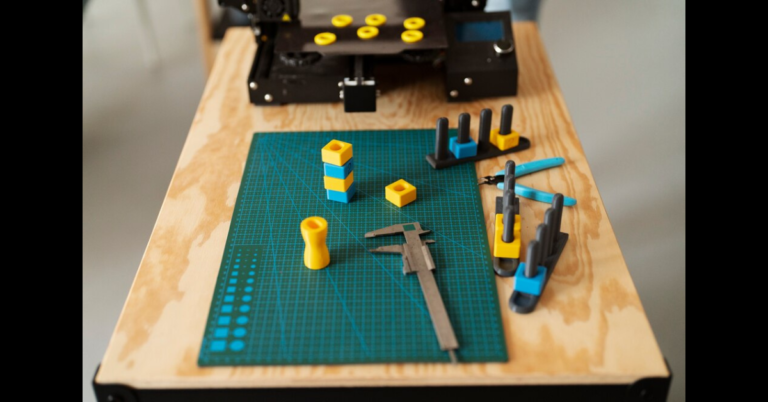Calandrando, an essential process in various industries, embodies the convergence of mechanical precision, material science, and manufacturing expertise. From shaping metals to refining polymers, calendering plays a pivotal role in crafting sheets and films of controlled thickness and surface properties. This article delves into the intricate workings of Calandrando, exploring its applications, technical nuances, and the transformative impact it has across diverse sectors.
Understanding Calandrando
At its core, Calandrando is a formative process wherein a solid material undergoes compression between heated metal rollers rotating in opposite directions. The material’s passage through these rollers, often equipped with blades for precision cutting, results in the desired size and surface characteristics of the product. The process finds extensive use in shaping metals, textile fibers, paper, and polymers, showcasing its versatility and adaptability across industries.
Calandrando in Polymer Manufacturing
In the realm of polymer manufacturing, Calandrando assumes paramount importance in producing plastic sheets and films of uniform thickness and structural integrity. The process begins with the polymer being transformed into a soft mass, typically achieved through extrusion for thermoplastics like PE and TPU, or in a gel state for PVC with plasticizers. Rubber calendering, likewise, operates in a gel state with specialized additives facilitating processing efficiency.
As the polymer mass or gel passes through a series of heated rollers, a meticulously controlled environment ensures the formation of a uniform product. The final pair of rollers, adjustable to specific thickness settings, imparts the desired dimensions to the sheets or films. Crucially, the cooling roller system contributes to establishing the permanent molecular structure of the product, ensuring mechanical strength and stability.
Technical Considerations in Calandrando
A fundamental aspect of Calandrando is the arrangement and temperature control of the rollers. While roller configurations may vary, the typical setup comprises three or four rollers, with material feeding primarily from the top. The length of these rollers, ranging from 2 to 4 meters, influences the efficiency and precision of the Calandrando process.
Maintaining optimal temperatures throughout the process is critical, as deviations can impact material properties and product quality. Despite the mechanical forces at play, the temperature variation remains relatively low (<10-20ºC) due to minimal viscous generation and heat conduction within the material. This precise thermal management ensures consistent material behavior and facilitates fine-tuned adjustments during production.
Roller speed emerges as another pivotal parameter governing Calandrando outcomes. Variations in roller speed enable the regulation of sheet thickness without altering the roller gap, a crucial factor in achieving dimensional accuracy. However, excessive speed increments can lead to challenges such as surface roughness and potential product defects, underscoring the delicate balance between productivity and quality control in Calandrando operations.
Applications Across Industries
The impact of calendering reverberates across diverse industrial domains, each benefiting from its unique capabilities and contributions. In the automotive sector, calendered sheets find application in interior components, weather seals, and protective coatings, showcasing durability and aesthetic appeal. Similarly, in the packaging industry, calendered films offer barrier properties, printability, and structural integrity, enhancing product shelf life and visual appeal.
Textile manufacturing leverages Calandrando to impart surface finishes, embossed patterns, and dimensional stability to fabrics, catering to diverse fashion and functional needs. Moreover, the construction sector relies on calendered materials for roofing membranes, waterproofing layers, and insulation solutions, underscoring its role in enhancing building performance and longevity.
Innovations and Future Trends
The evolution of Calandrando technology continues to unfold with advancements in materials science, automation, and process optimization. Integrated sensors and control systems enable real-time monitoring of critical parameters, ensuring consistent quality and operational efficiency. Additionally, the integration of artificial intelligence and machine learning algorithms promises predictive maintenance, fault detection, and performance optimization, ushering in an era of smart Calandrando solutions.
Emerging trends such as sustainable materials, bio-based polymers, and circular economy principles are shaping the future trajectory of calendering. Innovations in renewable energy sources for heating rollers, recycling of process waste, and eco-friendly additives underscore the industry’s commitment to environmental stewardship and resource efficiency. Moreover, customization capabilities, rapid prototyping, and on-demand manufacturing are driving customer-centric approaches, fostering agility and innovation in product development cycles.
Challenges and Considerations
Despite its myriad benefits, Calandrando poses certain challenges and considerations that warrant attention. Ensuring operator safety amidst high-pressure environments and heat-intensive operations remains a priority, necessitating robust safety protocols and training initiatives. Material selection and compatibility with calendering processes are also crucial, as certain polymers or additives may exhibit processing challenges or quality variations.
Furthermore, market dynamics, regulatory requirements, and geopolitical factors can influence the Calandrando landscape, necessitating adaptability and strategic foresight. Collaboration across stakeholders, including manufacturers, researchers, policymakers, and end-users, is essential for fostering a conducive ecosystem conducive to innovation, sustainability, and market resilience.
Conclusion
Calandrando, with its blend of precision engineering, material science, and industrial ingenuity, stands as a cornerstone of modern manufacturing. From shaping everyday products to driving technological innovations, calendering continues to push boundaries and redefine possibilities across industries. As we navigate an era of rapid change and evolving consumer demands, the art and science of calendering remain indispensable, shaping a resilient and sustainable future for manufacturing and beyond.

